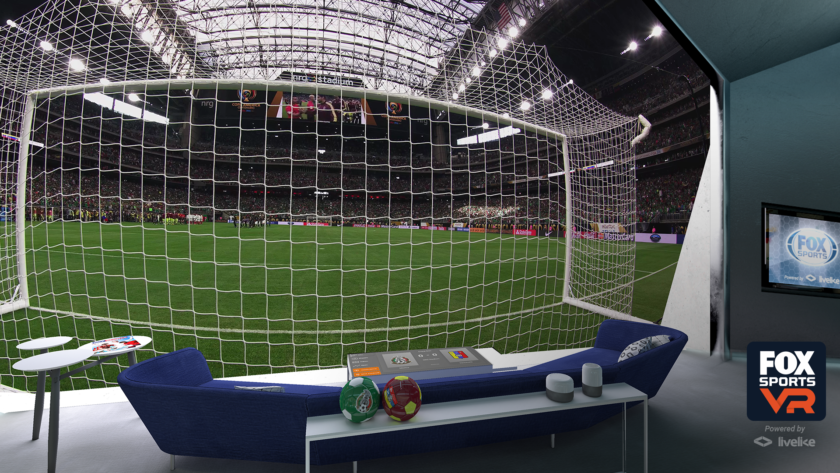Connections

Fox Sports SVP: VR Here to Stay
Story Highlights
The Dec. 10 MLS Cup marked yet another first for Fox Sports and its virtual reality endeavors, with the network not only marking the first time the league’s championship game has been offered in VR, but also giving viewers five camera angles to choose from.
Fox Sports has been one of 2016’s main advocates for VR and sports, with the Daytona 500, Premier Boxing Champions title fight, the U.S. Open, the Big East Basketball Tournament, Bundesliga soccer season opener, Monster Jam monster truck event and three college football games also seeing VR treatment.
Devin Poolman, SVP of digital platforms for Fox Sports, sat down with the Media & Entertainment Services Alliance (MESA) to talk about what Fox Sports has learned with its VR experiences, and what 2017 holds for the network and VR.
MESA: This weekend, we’ll yet another Fox Sports VR experience. What have you guys learned over this short period of time experimenting and putting these things out there?
Poolman: One part, we’re learning what users like. And from the beginning, it was a test to see, not just when users like the VR experience, but when they also appreciate it in a non-headset driven environment. Increasingly we’ve seen the audience the time spends really skews towards the natural window experience and qualitatively looking at and listening to people who have gone through the experience. They get a lot out of it even when is it a head-mounted device or when it’s a phone only magic window peewee experience.
MESA: Now we’re going to see a new replay function here. Tell us a little more about that.
Poolman: One of the things kind of experienced firsthand early on, and that is when you catch a moment in a live event, you want to see it from different angles. One of the great things about this VR experience is being able to switch between, and you can choose your own camera angle. So having the right perspective, whether it’s a goal in a soccer game or a touchdown in a football game, having the right perspective is critical. And if you happen to be on a high shot when there’s a long touchdown pass, or at midfield when there is a great corner, we recognize just from our own experience as sports fans that you want to be able to rewind and watch that goal or watch that touchdown again.
MESA: Starting with the college football VR experiences you guys first experimented with, you guys have been working with LiveLike. What kind of partner have they been? What do they bring to the table?
Poolman: Well, they have been a great partner to work within our Fox Sports VR app. They have been in essence both a production partner helping with the actual onsite production, as well as practically an after-development partner in helping us roll out the Fox Sports VR application itself. We really like that their focus is one that is end to end, but really focused around user experience, or just the technology. The technology is fascinating, but that alone is not what keeps people in the experience. What keeps people in the experience is the interactivity. They’ve shown not just a willingness to work with us on that, but also work with us on new ideas. The magic window version of their experience is actually our idea, and we initially had to talk them into building out a version that we would just get on the standard phone, and ideally I think they are just as enthusiastic about it now as we are.
MESA: Very good. And last question, and just on a broader outlook, how important is this holiday season going to be for virtual reality? And, going beyond that, how important is CES going to be? Are you guys keeping an eye on how the headsets do, and what kind of advances we’re going to be looking out for next?
Poolman: Absolutely. We are keeping an eye out on things. I think we have the right perspective in live streaming fields, sports obviously fitting into that category, is likely going to trail as an option behind other use cases frankly that don’t have some of the same challenges we have on the live streaming side. Challenges like live streaming delivery and bandwidth required for the resolution you really want to make a better experience, a larger experience, than you just saw on your television set. Where I think really we need to keep in mind that we are going to see this growth in the increase in the available headsets, and I think it’s really going to help the gaming industry first, and then I think we are going to find opportunities for the wider streaming sports to kind of follow that uptick.









